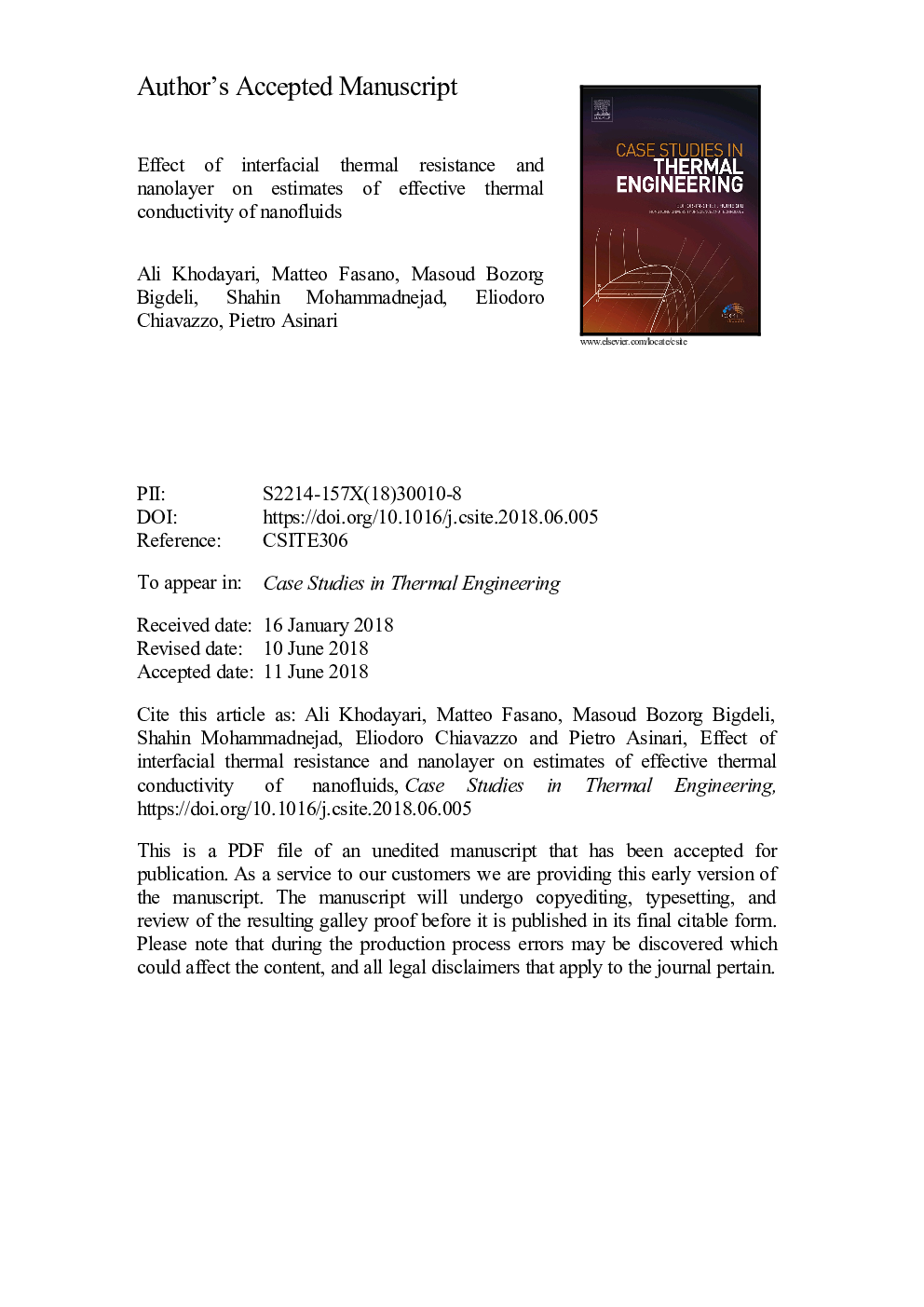| کد مقاله | کد نشریه | سال انتشار | مقاله انگلیسی | نسخه تمام متن |
|---|---|---|---|---|
| 7153352 | 1462473 | 2018 | 22 صفحه PDF | دانلود رایگان |
عنوان انگلیسی مقاله ISI
Effect of interfacial thermal resistance and nanolayer on estimates of effective thermal conductivity of nanofluids
ترجمه فارسی عنوان
اثر مقاومت حرارتی بین فازی و نانولوله بر روی تخمین هدایت حرارتی مؤثر نانوفیلد
دانلود مقاله + سفارش ترجمه
دانلود مقاله ISI انگلیسی
رایگان برای ایرانیان
کلمات کلیدی
نانولایر، مقاومت کاپیتزا، نانو سیال، تقریب متوسط موثر، هدایت حرارتی،
موضوعات مرتبط
مهندسی و علوم پایه
سایر رشته های مهندسی
مهندسی مکانیک
چکیده انگلیسی
Colloidal suspensions of nanoparticles (nanofluids) are materials of interest for thermal engineering, because their heat transfer properties are typically enhanced as compared to the base fluid one. Effective medium theory provides popular models for estimating the overall thermal conductivity of nanofluids based on their composition. In this article, the accuracy of models based on the Bruggeman approximation is assessed. The sensitivity of these models to nanoscale interfacial phenomena, such as interfacial thermal resistance (Kapitza resistance) and fluid ordering around nanoparticles (nanolayer), is considered for a case study consisting of alumina nanoparticles suspended in water. While no significant differences are noticed for various thermal conductivity profiles in the nanolayer, a good agreement with experiments is observed with Kapitza resistance â10â9âm2K/W and sub-nanometer nanolayer thickness. These results confirm the classical nature of thermal conduction in nanofluids and highlight that future studies should rather focus on a better quantification of Kapitza resistance at nanoparticle-fluid interfaces, in order to allow bottom up estimates of their effective thermal conductivity.
ناشر
Database: Elsevier - ScienceDirect (ساینس دایرکت)
Journal: Case Studies in Thermal Engineering - Volume 12, September 2018, Pages 454-461
Journal: Case Studies in Thermal Engineering - Volume 12, September 2018, Pages 454-461
نویسندگان
Ali Khodayari, Matteo Fasano, Masoud Bozorg Bigdeli, Shahin Mohammadnejad, Eliodoro Chiavazzo, Pietro Asinari,
